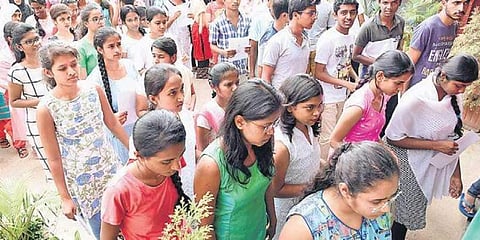

Notwithstanding the ongoing state Assembly poll process and ahead of the 2019 Parliamentary elections, India's youth are now giving priority to expand their knowledge base and are 'obsessed' with learning more languages crossing the regional and national boundaries to establish themselves as more 'global in the truest sense.'
According to recently released census data, 52 per cent of India's urban youth are now bilingual and 18 per cent of them speaks three languages.
Young Indians (age 20-24 years) are two to three times more likely to be bilingual or trilingual than their older family members.
The data suggest that an important determinant of how many languages people know is the job market and the need to travel out of one's home state to find a job.
The overall figure hides the huge difference between urban and rural India.
While barely 22 per cent are bilingual and just 5 per cent trilingual in rural areas, in urban India 44 per cent are bilingual and 15 per cent trilingual.
The higher the age group, the lesser the proportion of people who know more than one language whether in rural or urban India.
It also reveals that up to the age of 14, there is no gender variation in the number of languages known.
Asked to comment on the 'trend' of youth giving topmost priority to learning more languages, educationist and lecturer of Political Science Ashok Banerjee, residing in the C R Park area of the national capital, maintained, ''It is a good sign that the youth of the country is according priority to learning of more languages besides his or her mother-tongue not only for employment opportunities but also for their overall advancement.''
This view was echoed by Ms Ratna Sengupta, lecturer of Economics in the Calcutta University, who observed, ''The data does not indicate that the youth are becoming apathetic towards the democratic process, but only signals a much-awaited step that is required for the new generation for their overall socio-economic development.'' In the 1990s, less than 20 per cent of Indians were bilingual.
